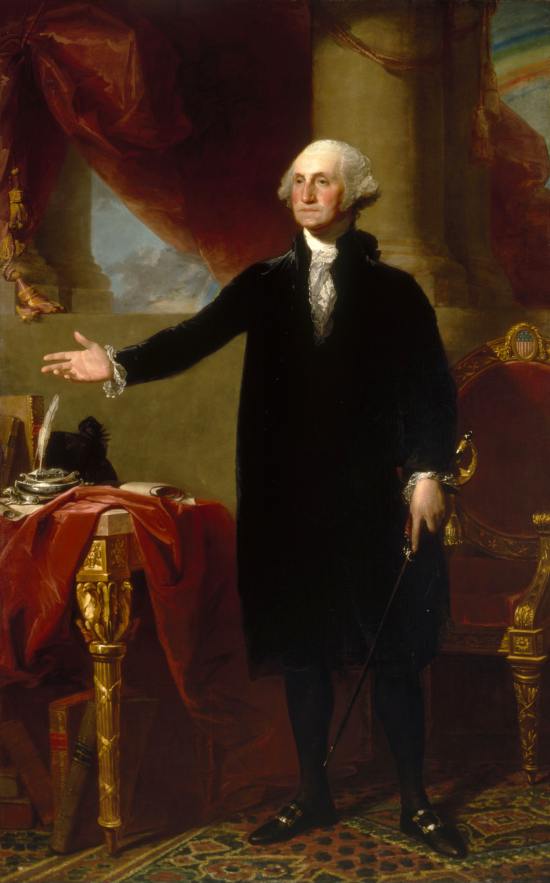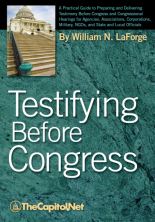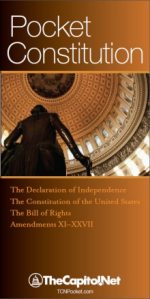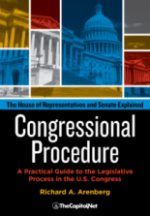From the Congressional Glossary – Including Legislative and Budget Terms
President of the United States / State of the Union
President Trump 2018 State of the Union Address (C-SPAN)
The U.S. Constitution, Article 2, Section 1, established the office of the President of the United States, who is the head of the executive branch of the United States government:
The executive Power shall be vested in a President of the United States of America. He shall hold his Office during the Term of four Years, and, together with the Vice President, chosen for the same Term, be elected…
Article II, Section 1 – The President
The power of the executive branch is vested in the president, who also acts as head of state and Commander-in-Chief of the armed forces.
U.S. Constitution, Article 2 – The Executive Branch
Section 1 – The President
Section 2 – Civilian Power over Military, Cabinet, Pardon Power, Appointments
Section 3 – State of the Union, Convening Congress
Section 4 – Disqualification
It is possible under the Constitution for the president to reconvene Congress within or between sessions. The threat of the president calling Congress back is sometimes used tactically to extract an extra effort from Congress toward completing a specific legislative action.
[The president] may, on extraordinary Occasions, convene both Houses, or either of them, and in Case of Disagreement between them, with Respect to the Time of Adjournment, he may adjourn them to such Time as he shall think proper….
Article II, Section 3, U.S. Constitution
The terms of the President and Vice President shall end at noon on the 20th day of January, and the terms of Senators and Representatives at noon on the 3d day of January, of the years in which such terms would have ended if this article had not been ratified; and the terms of their successors shall then begin.
Twentieth Amendment to the U.S. Constitution, Section 1.
The inauguration of the president is referred to as a “joint gathering” of Congress, although in recent years it has been held pursuant to concurrent resolution and thus would be a joint session of Congress.
A piece of legislation must also pass the test of having sufficient political support to gain the president’s signature to become law. The president, however, might veto a measure for any number of reasons, including a different sense of what the nation wants or needs. For Congress then to override a presidential veto requires a two-thirds supermajority in each chamber. On those infrequent occasions when a veto is overridden, political consensus in Congress must be very high.
It is in the power of the presidential veto that one can clearly see what the phrase “co-equal branches of government” means. Unless there are two-thirds of the members of each chamber willing to vote to override a veto, almost the equivalent of Congress speaking with one voice, the power of the sole executive–the president–is equal to the votes of more than 280 representatives and more than 60 senators, assuming all members are present and vote overwhelmingly for a measure. But few controversial measures pass Congress by majorities within striking distance of the two thirds required for a veto override. The president’s exercise of the veto should be seen as a constitutional action first and a political action second.

GAO is headed by the comptroller general. After receiving a list of candidates from a special bicameral, bipartisan commission, the president nominates the comptroller general to a fifteen-year term; the presidential appointment is subject to the Senate’s confirmation.
The Office of Management and Budget (OMB) organizes the preparation of the annual budget in the executive branch, and works to implement the president’s guidance and decisions during that process.
Managing as President: Nixon Creates the Office of Management and Budget (OMB)
Congress typically holds several joint meetings or joint sessions each year, one to receive the president’s State of the Union address and others to allow noted Americans and foreign leaders to address members of the House and Senate meeting together. The president in his State of the Union address to Congress outlines his priorities for the year, which may lead to legislation. Senators, by tradition, rarely introduce legislation until after the president delivers his State of the Union address.
In contemporary practice, the president appears before a joint session of Congress in late January to deliver a speech popularly referred to as the State of the Union address or message, laying out his legislative program, explaining his policies on the major issues of the time, and exhorting Congress to take specific actions in support of his vision and program. The address emanates from a constitutional provision (Article II, Section 3, clause 1): “He [the president] shall from time to time give to the Congress Information on the State of the Union, and recommend to their Consideration such measures as he shall judge necessary and expedient[.]”
After consultation with the White House, the House and Senate pass a concurrent resolution setting a day and time for a joint session “for receiving such communication as the President of the United States shall be pleased to make to them.” When the day arrives, a special security sweep is made of the Capitol, and other security measures are triggered. The senators are escorted to the House chamber by the Senate sergeant at arms. Other dignitaries are also seated in the chamber–former members, justices of the Supreme Court, the joint chiefs of staff, Cabinet secretaries and Cabinet-rank officials, and ambassadors to the United States. Traditionally, one Cabinet secretary and several members of Congress, representing both parties, do not attend the joint session, to ensure succession should a catastrophe happen at the Capitol while the president is there. The first lady and guests of the president are allocated seats in the gallery. Other gallery guests must obtain tickets.

The Speaker presides over the joint session, but shares the dais with the vice president in his role as president of the Senate. A group of senators and representatives that was previously selected escorts the president into the chamber. The president is announced first at the House door by the House sergeant at arms and then again by the Speaker after the president takes his place on the dais (see Mace). The group of members also escorts the president out of the chamber after he completes his address.
President Truman’s 1947 address was the first to be televised. President Johnson was the first to make his address during prime-time television viewing hours, recognizing the opportunity to speak to the nation that the event presented. A formal opposing-party response was first made in 1966. The State of the Union address has now become an important media event, and both parties use it to publicize their positions on issues covered or not covered in the address, in events both before and after the address.
80th Congress Convenes; Truman State of the Union 1947/1/6
Immediately following a State of the Union address, members of Congress meet the press in National Statuary Hall to put their “spin” on it. The day after the State of the Union address, the president might travel to several states to publicize his program and to build public support for his proposals. In years in which a new president takes office, the outgoing president might choose not to deliver an address in person, or might choose to make a televised address at a place other than the Capitol, and the incoming president might choose to make a more focused address several months into office to seek action by Congress on a specific presidential initiative.
Also see
- Bully Pulpit (CongressionalGlossary.com)
- Comptroller General
- Electoral College
- Executive Branch
- Executive Order
- Executive Privilege
- Impeach / Impeachment
- Joint Session
- Office of Management and Budget (OMB)
- Presidential Appointment
- Presidential Signature / Presidential Signing Statements
- Presidential Succession
- President of the Senate
- President Pro Tempore
- Speaker
- Terms and Sessions of Congress
- Veto
- § 5.30 Terms and Sessions of Congress, § 6.290 Presidential Action on Enacted Measures, § 7.40 Presidential Budget Process, § 8.20 Congress and the Executive: Legislation, § 8.21 State of the Union Address, § 8.90 Congress and the Executive: Presidential Election and Succession, in Congressional Deskbook
- Chapter 6.G. The President, Chapter 8.O. Presidential Election, Chapter 8.P. Presidential Succession, in Congressional Procedure
More
- The Presidents – White House
- James Madison, Father of the Constitution (1751-1836)
- President of the United States – Wikipedia
- “Presidential Terms and Tenure: Perspectives and Proposals for Change,” CRS Report R40864 (40-page PDF
 )
) - “Presidential and Vice Presidential Succession: Overview and Current Legislation,” CRS Report RL31761 (30-page PDF
 )
) - “War Powers Resolution: Presidential Compliance,” CRS Report IB81050 (21-page PDF
 )
) - “War Powers Resolution: Expedited Procedures in the House and Senate,” CRS Report R47603 (24-page PDF
 )
) - “Election of the President and Vice President by Congress: Contingent Election,” CRS Report RS20300 (8-page PDF
 )
) - “The Role of the President in Budget Development,” CRS Report RS20179 (5-page PDF
 )
) - “The President’s State of the Union Message: Frequently Asked Questions,” CRS Report RS20021 (8-page PDF
 )
) - “History, Evolution, and Practices of the President’s State of the Union Address: Frequently Asked Questions,” CRS Report R44770 (14-page PDF
 )
) - “Resolutions to Censure the President: Procedure and History,” CRS Report R45087 (27-page PDF
 )
) - “Impeachment: An Overview of Constitutional Provisions, Procedure, and Practice,” CRS Report 98-186 (40-page PDF
 )
) - “Censure of the President by the Congress,” CRS Report 98-843 (19-page PDF
 )
) - “Presidential Nominating Process: Current Issues,” CRS Report RL34222 (19-page PDF
 )
) - “House Committee Chairs: Considerations, Decisions, and Actions as One Congress Ends and a New Congress Begins,” CRS Report RL34679 (35-page PDF
 )
)
Courses
- Congressional Operations Briefing – Capitol Hill Workshop
- Drafting Federal Legislation and Amendments
- Writing for Government and Business: Critical Thinking and Writing
- Custom Training
- Preparing and Delivering Congressional Testimony and Oral Presentations, a Five-Course series on CD
- Congress, the Legislative Process, and the Fundamentals of Lawmaking Series, a Nine-Course series on CD
Publications

Testifying Before Congress |

Pocket Constitution |

Citizen’s Handbook to Influencing Elected Officials: A Guide for Citizen Lobbyists and Grassroots Advocates |

Congressional Procedure |
CongressionalGlossary.com, from TheCapitol.Net
For more than 40 years, TheCapitol.Net and its predecessor, Congressional Quarterly Executive Conferences, have been teaching professionals from government, military, business, and NGOs about the dynamics and operations of the legislative and executive branches and how to work with them.
Our custom on-site and online training, publications, and audio courses include congressional operations, legislative and budget process, communication and advocacy, media and public relations, testifying before Congress, research skills, legislative drafting, critical thinking and writing, and more.
TheCapitol.Net is on the GSA Schedule, MAS, for custom on-site and online training. GSA Contract GS02F0192X
TheCapitol.Net is now owned by the Sunwater Institute.
Teaching how Washington and Congress work ™

